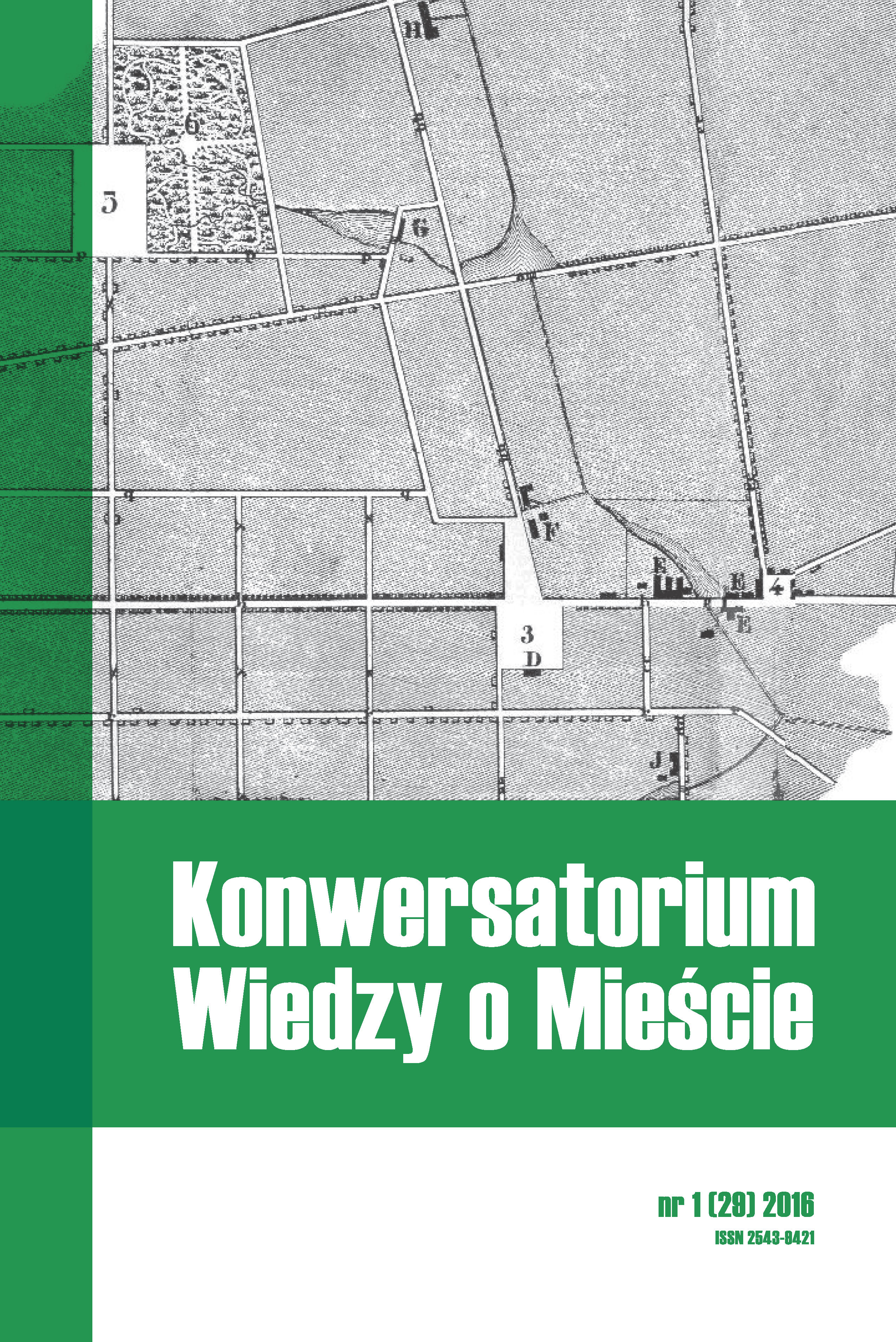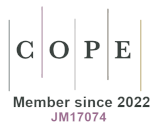Hiperróżnorodność lokalnie: mobilność społeczna i rozwój przedsiębiorczości na Pradze-Północ w Warszawie
DOI:
https://doi.org/10.18778/2543-9421.01.04Słowa kluczowe:
hiperróżnorodność, gentryfikacja, mobilność społeczna, przedsiębiorczość, Praga-Północ, WarszawaAbstrakt
Artykuł opisuje proces gentryfikacji na Pradze-Północ, który prowadzi do hiperróżnorodności tej dzielnicy. Badania pokazują, że zróżnicowanie społeczne może mieć zarówno pozytywny, jak i negatywny wpływ na mobilność społeczną, choć żeby uruchomić jego potencjał do pozytywnych zmian, ważne jest wcześniejsze zadbanie o integrację społeczną w danym regionie. Hiperróżnorodność ma także dwojaki wpływ na przedsiębiorczość na Pradze. Z jednej strony obniża próg wejścia, ułatwiając założenie biznesu, który jest w stanie się utrzymać, ale jednocześnie znacząco utrudnia wytworzenie szerokiego grona stałej klienteli, która dawałaby przedsiębiorcom poczucie stabilności i możliwość rozwoju.
Bibliografia
Alesina A., La Ferrara E., 2005, Ethnic diversity and economic performance, „Journal of Economic Literature”, 43, s. 762–800.
Google Scholar
Angrist J., Kugler A., 2003, Protective or counter-protective? Labor market institutions and the effect of immigration on EU natives, „Economic Journal”, 113 (488), s. 302–331.
Google Scholar
Badyina A., Golubchikov O., 2005, Gentrification in central Moscow: A market process or a deliberate policy? Money, power and people in housing regeneration in Ostozhenka, Moscow.
Google Scholar
Bauman Z., 2000, Liquid modernity, Polity Press, Malden.
Google Scholar
Bellini E., Ottaviano G.I.P., Pinelli D., Prarolo G., 2008, Cultural diversity and economic performance: Evidence from European regions, Hamburg Institute of International Economics, Hamburg.
Google Scholar
Bodaar A., Rath J., 2005, Cities, diversity and public space, „Metropolis World Bulletin”, 5, s. 3–5.
Google Scholar
Bolt G., Kempen van R., 2013, Neighbourhood based policies in The Netherlands: counteracting neighbourhood effects?, [w:] D. Manley, M. van Ham, N. Bailey, L. Simpson, D. Maclennan (eds.), Neighbourhood effects or neighbourhood based problems?, Springer, Dordrecht, s. 195–213.
Google Scholar
Bourdieu P., Wacquant L.J.D., 1992, An invitation to reflective sociology, University of Chicago Press, Chicago, s. 119
Google Scholar
Brännström L., Rojas Y., 2012, Rethinking the long-term consequences of growing up in a disadvantaged neighbourhood: lessons from Sweden, „Housing Studies”, 27 (6), s. 729–747.
Google Scholar
Bridge G., Watson S., 2013, Reflections on division and difference, [w:] G. Bridge, S. Watson S. (eds.), The New Blackwell Companion to the City, Wiley Blackwell, Chichester.
Google Scholar
Cantle T., 2012, Interculturalism: for the era of globalisation, cohesion and diversity, „Political Insight”, 3 (3), s. 38–41.
Google Scholar
Cully M., 2009), Diversity dividend: Making the most from cultural diversity, Australian Government, Department of Immigration and Citizenship, Sydney.
Google Scholar
Davidson M., Lees L., 2005, New built ‘gentryfication’ in London’s Riverside Renaissance, „Environment and Planning”, A 37(7), s. 1165–1190.
Google Scholar
Derek M., Duda-Gromada K., Kosowska P., Kowalczyk A., Madurowicz M., 2013, Problemowe i problematyczne abc turystyki w Warszawie, „Prace Geograficzne”, 134, s. 7–36
Google Scholar
Easterly W., Levine R., 1997, Africa’s growth tragedy: Policies and ethnic divisions, „Quarterly Journal of Economics”, 112(4); http://ssrn.com/abstract=88828.
Google Scholar
Eraydin A., Tasan-Kok T., Vranken J., 2010, Diversity matters: Immigrant entrepreneurship and contribution of different forms of social integration in economic performance of cities, „European Planning Studies”, 18, s. 521–543.
Google Scholar
Fainstein S., 2005, Cities and diversity: should we want it? Can we plan for it?, „Urban Affairs Review”, 41, s. 3–19.
Google Scholar
Faist T., 2009, Diversity: a new mode of incorporation?, „Ethnic and Racial Studies”, 32 (1), s. 171–190.
Google Scholar
Friedrichs J., 1998, Do poor neighbourhoods make their residents poorer? Context effects of poverty neighbourhoods on residents, [w:] H.J. Andress (ed.), Empirical poverty research in a comparative perspective, Ashgate, Aldershot, s. 77–99.
Google Scholar
Galster G., 2008, Quantifying the effect of neighbourhood on individuals: Challenges, alternative approaches, and promising directions, „Schmollers Jahrbuch”, 128, s. 1–42.
Google Scholar
Gardawski J., 2013, Rzemieślnicy i biznesmeni. Właściciele małych i średnich przedsiębiorstw prywatnych, Wyd. Naukowa Scholar, Warszawa.
Google Scholar
Gordon I.R., Monastiriotis V., 2006, Urban size, spatial segregation and inequality in educational outcomes, „Urban Studies”, 43 (1), s. 213–36.
Google Scholar
Grabkowska M., 2012, Regeneration of the post-socialist inner city: Social change and Bottom-up transformation in Gdańsk, Pracownia, Gdańsk.
Google Scholar
Granovetter M.S., 1973, The strength of weak ties, „American Journal of Sociology”, 78, 6, s. 1360–1380.
Google Scholar
Gusfield J.R., 1975, Community: A critical response, Harper & Row, New York.
Google Scholar
Kempen van R., Wissink B., 2014, Between spaces and flows: towards a new agenda for neighbourhood research in an age of mobility, „Geografiska Annaler”, ser. B, 96 (2), s. 95–108.
Google Scholar
Kleinhans R., 2005, Sociale Implicaties van Herstructurering en Herhuisvesting, Delft University Press, Delft.
Google Scholar
Korcelli P., Korcelli-Olejniczak E., 2005, Warsaw: An evaluation of population trends and forecasts. Regional Scientists’ Tribute to Professor Ryszard Domański, „Studia Regionalia”, 15, s. 243–257.
Google Scholar
Korcelli-Olejniczak E., 2014, Partycypacja nauki i jej instytucji w kształtowaniu przestrzeni miasta, [w:] T. Markowski, D. Stawasz (eds.), Partnerstwo i odpowiedzialność w funkcjonowaniu miasta, KPZK PAN, Warszawa, s. 52–63.
Google Scholar
Korcelli-Olejniczak E., Piotrowski F., 2015, Hiperróżnorodność w mieście – znaczenie, wyzwanie, zasób, [w:] A. Wolaniuk (red.), Współczesne czynniki i bariery rozwoju miast, XXVII „Konwersatorium Wiedzy o Mieście”, Wyd. Uniwersytetu Łódzkiego, Łódź.
Google Scholar
Korcelli-Olejniczak E., Bierzyński A., Dworzański P., Piotrowski F., 2016, Fieldwork entrepreneurs, Warsaw (Poland); https://www.urbandivercities.eu/wp-content/uploads/2016/09/WP7-Warsaw-Report–2N-Fieldwork-Entrepreneurs.pdf.
Google Scholar
Korcelli-Olejniczak E., Bierzyński A., Dworzański P., Grochowski M., Piotrowski F., Węcławowicz G., 2017, Dealing with urban diversity. The case of Warsaw, IGSO PAS, Warsaw.
Google Scholar
Kovács Z., Wiesner R., Zischner R., 2013, Urban renewal in the inner-city of Budapest: Gentrification from a post-socialist perspective, „Urban Studies”, 1, s. 22–38.
Google Scholar
Bank Danych Lokalnych, 2015, GUS, Warszawa.
Google Scholar
Łukasiuk M., 2007, Obcy w mieście: migracja do współczesnej Warszawy, Żak, Warszawa.
Google Scholar
Miasta otwarte – raport, 2015, Fundacja Inna Przestrzeń, ss. 194.
Google Scholar
Montgomery J., 1992, Job search and network composition: implications of the strength-of-ties hypothesis, „American Sociological Review”, 57, s. 586–596.
Google Scholar
Musterd S., Andersson R., 2006, Employment, social mobility and neighbourhood effects: The case of Sweden, „International Journal of Urban and Regional Research”, 30, 1, s. 120–140.
Google Scholar
Nathan M., 2011, Ethnic inventors, diversity and innovation in the UK: evidence from patents microdata, Spatial Economics Research Centre, discussion paper no. SERCDP0092, October, Spatial Economics Research Centre London.
Google Scholar
Putnam R.D., 2001, Community-based social capital and educational performance, [w:] D. Ravitch, J.P. Viteritti (eds.), Making good citizens, education and civil society, Yale University Press, New Haven, s. 58–95.
Google Scholar
Ranking dzielnic, 2013, Ranking dzielnic Warszawy pod względem atrakcyjności warunków życia, Urząd Statystyczny w Warszawie, Mazowiecki Ośrodek Badań Regionalnych, Warszawa.
Google Scholar
Rocznik statystyczny. 2012, 2013, Główny Urząd Statystyczny, Warszawa, ss. 174.
Google Scholar
Rocznik statystyczny Warszawy, 2012, http://warszawa.stat.gov.pl/publikacje-i-foldery/roczniki-statystyczne/rocznik-statystycznywarszawy–2012,6,2.html; 25.06.2016.
Google Scholar
Rządowa Rada Ludnościowa, 2013. Założenia polityki ludnościowej Polski. Projekt, Warszawa.
Google Scholar
Sammartino A., 2001, Using diversity climate surveys: A toolkit for diversity management. Programme for the Practice of Diversity Management by Department of Immigration and Multicultural Affairs (DIMA) and Australian Centre for International Business (ACIB).
Google Scholar
Sampson R.J., Raudenbush S.W., 2005, Neighborhood stigma and the perception of disorder, http://scholar.harvard.edu/files/sampson/files/2005_focus_raudenbush.pdf; 25.06.2016.
Google Scholar
Schaffner G., Goldberg G.S., 2009, Poor women in rich countries, Oxford University Press, New York.
Google Scholar
Sorokin P.A., 1927, Social and cultural mobility, Free Press, Glencoe.
Google Scholar
Stępniak M., Węcławowicz G., Górczyńska M., Bierzyński A., 2009, Atlas Warszawy, 11: Warszawa w świetle Narodowego Spisu Powszechnego 2002, IGiPZ PAN, Warszawa.
Google Scholar
Syrett S., Sepulveda L., 2011, Realising the diversity dividend: Population diversity and urban economic development, „Environment and Planning” A, 43, s. 487–504.
Google Scholar
Szczepański M., Jałowiecki B., 2006, Miasto i przestrzeń w perspektywie socjologicznej. Wykłady z socjologii, 4, Wyd. Naukowe Scholar, Warszawa.
Google Scholar
Tasan-Kok T., Kempen van R., Raco M., Bolt G., 2014, Towards hyper-diversified European cities. A critical literature review, Utrecht University, The Netherlands.
Google Scholar
Tasan-Kok T., Vranken J., 2008, From survival to competition? The socio-spatial evolution of immigrant entrepreneurs in Antwerp, [w:] P. Ache, H.T. Andersen, T. Maloutas, M. Raco, T. Taşan-Kok (eds.), Cities between competitiveness and cohesion: Discourses, realities and implementation, Springer, Amsterdam, s. 151–168.
Google Scholar
Urban S., 2009), Is the neighbourhood effect an economic or an immigrant issue? A study of the importance of the childhood neighbourhood for future integration into the labour market, „Urban Studies”, 46 (3), s. 583–603.
Google Scholar
Vertovec S., 2010, Towards post-multiculturalism? Changing communities, conditions and contexts of diversity, „International Social Science Journal”, 61 (199), s. 83–95.
Google Scholar
Vertovec S., 2007, Super-diversity and its implications, „Ethnic and Racial Studies”, 30 (6), s. 1024–1054.
Google Scholar
Węcławowicz G., 2001, Przestrzeń ubóstwa – nowy czy stary wymiar zróżnicowania przestrzenno-społecznego w miastach Polski, „Przegląd Geograficzny”, 73(4), s. 451–475.
Google Scholar
Zelinsky W., Lee B.A., 1998, Heterolocalism: an alternative model of the socialspatial behaviour of immigrant ethnic communities, „International Journal of Population Geography”, 4 (4), s. 281–298.
Google Scholar
Pobrania
Opublikowane
Jak cytować
Numer
Dział
Licencja

Utwór dostępny jest na licencji Creative Commons Uznanie autorstwa – Użycie niekomercyjne – Bez utworów zależnych 4.0 Międzynarodowe.









